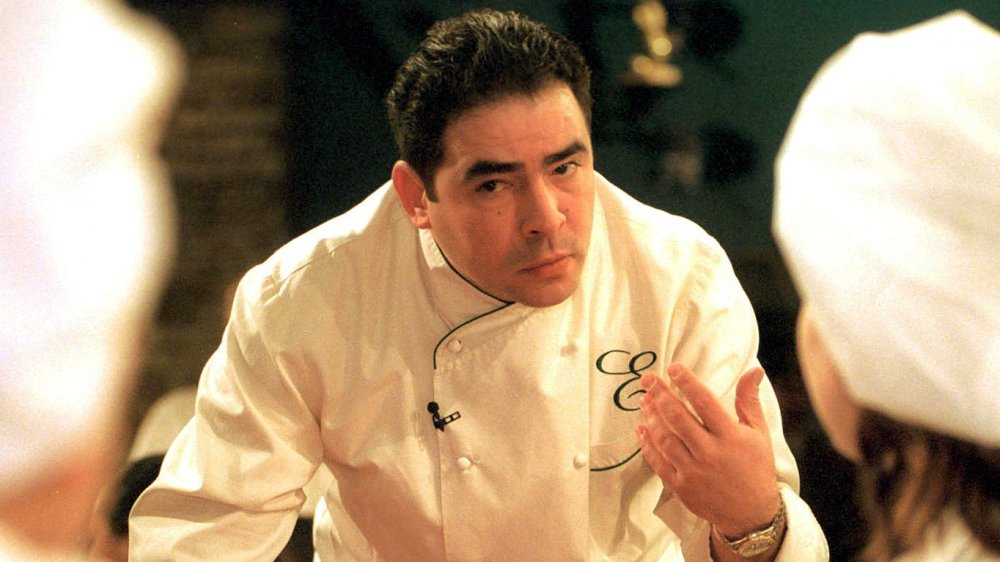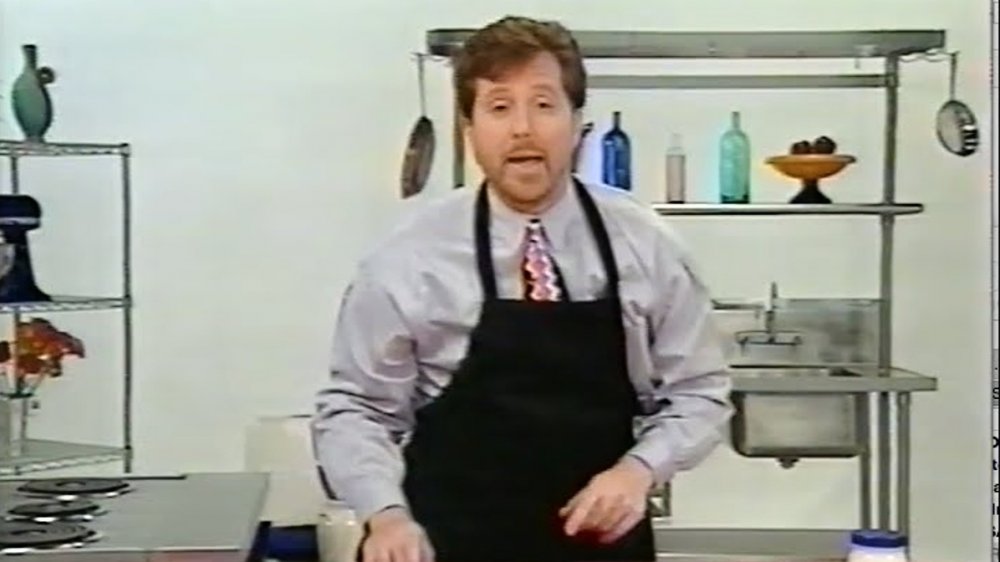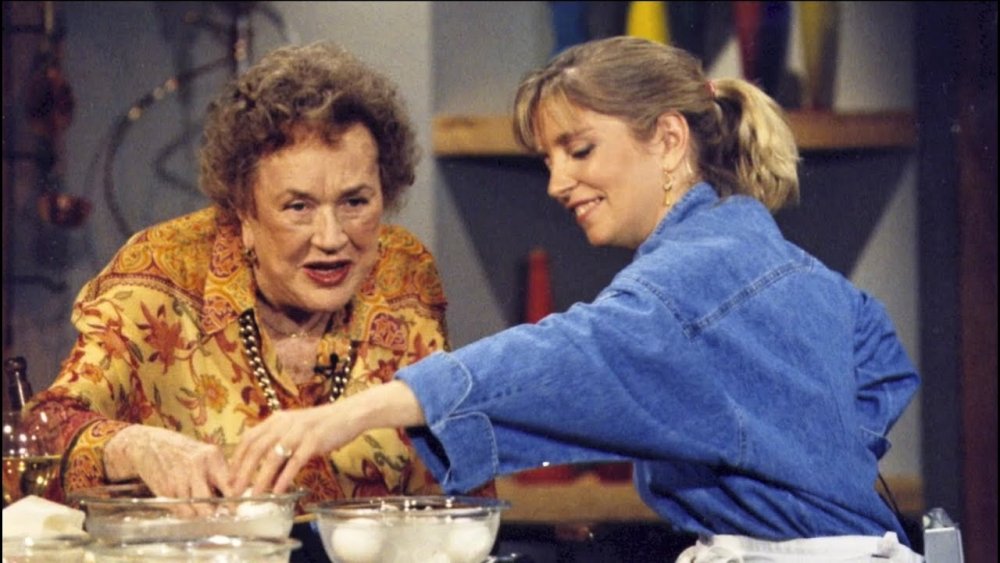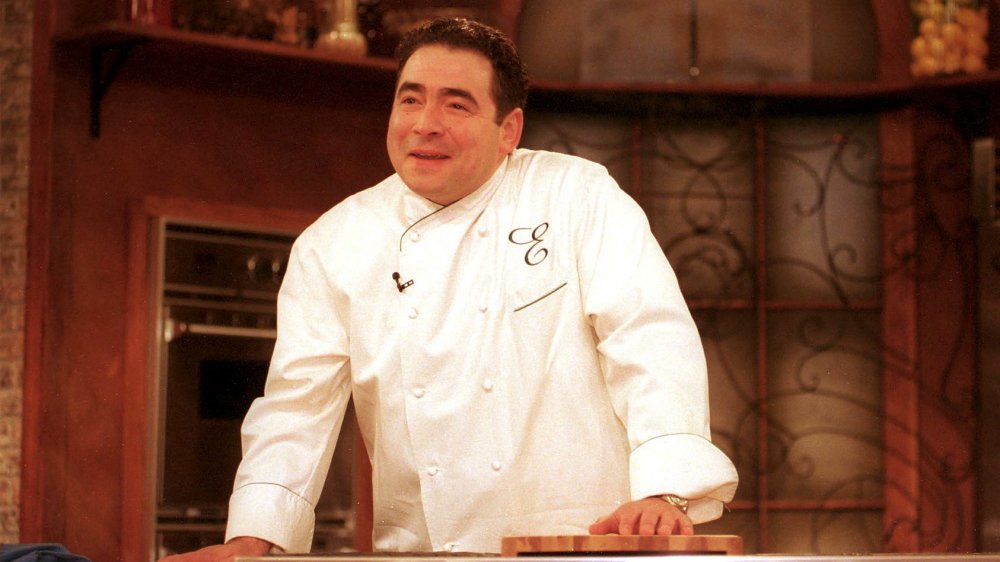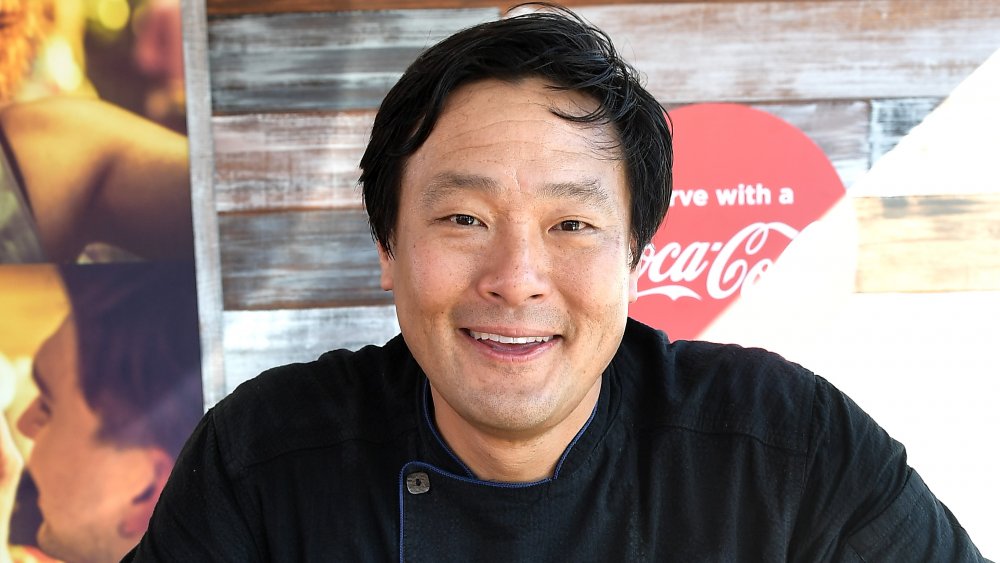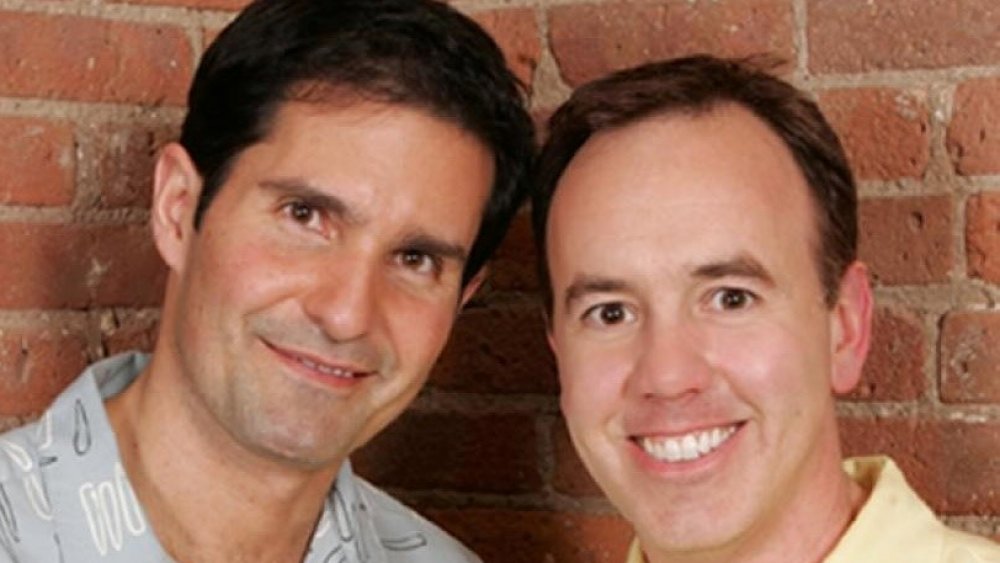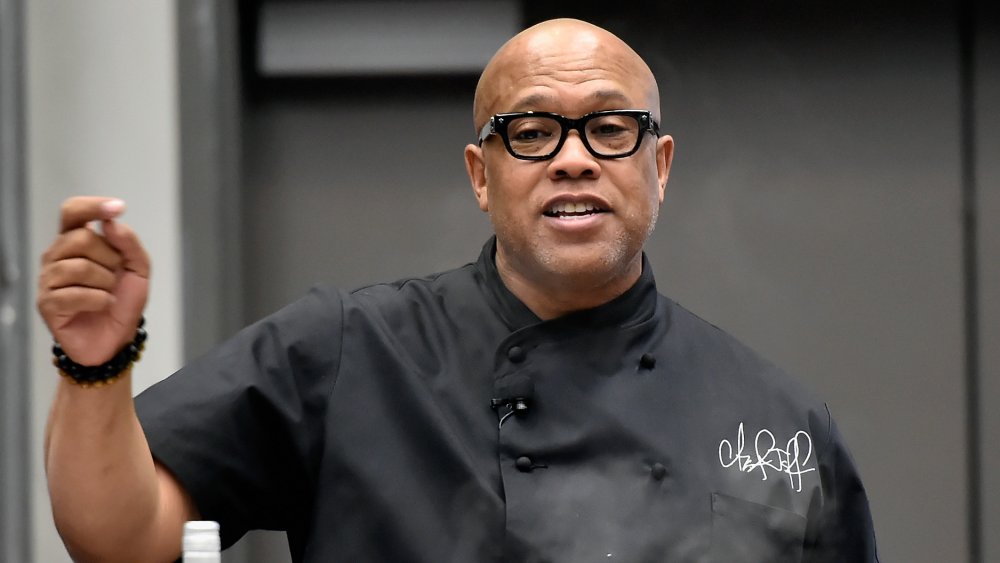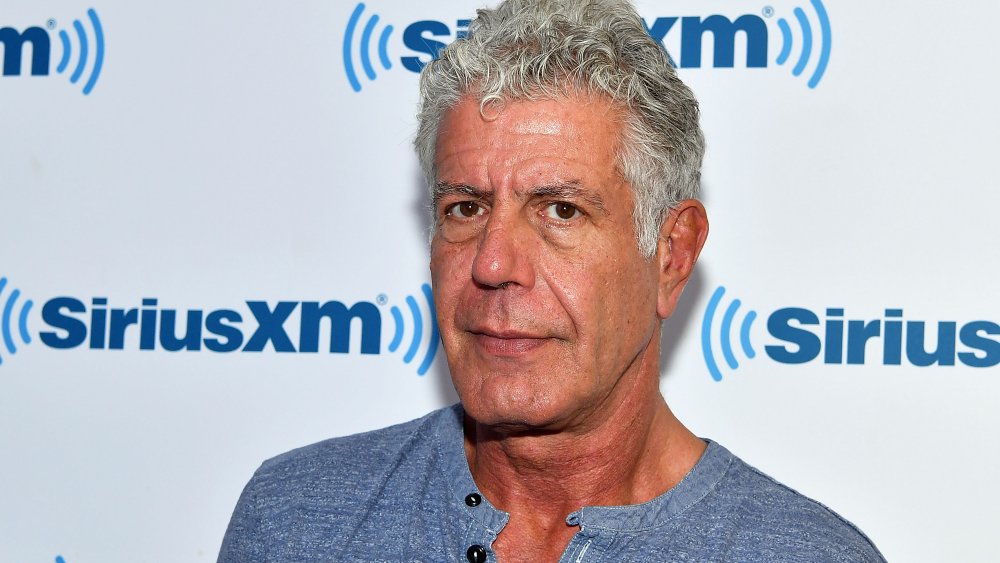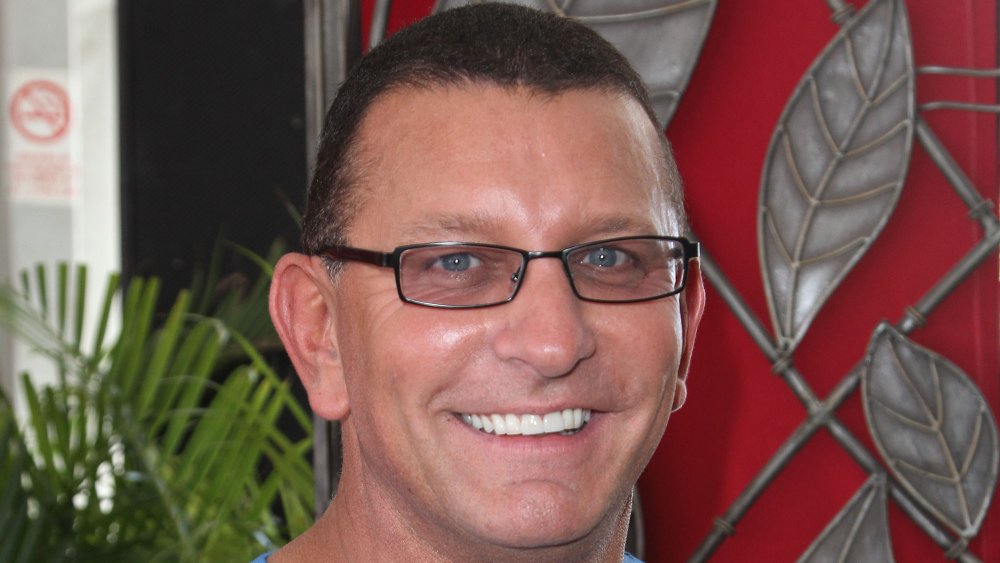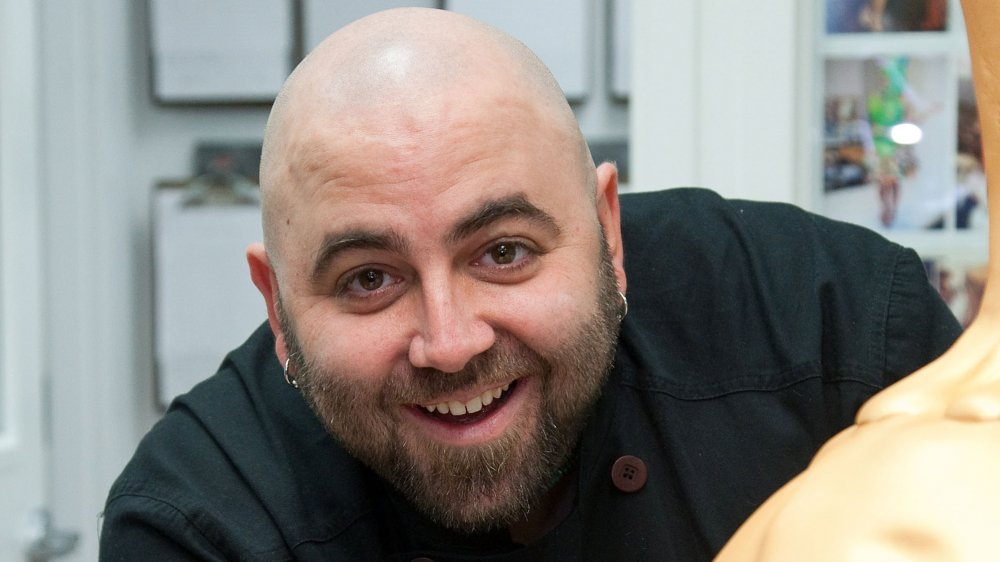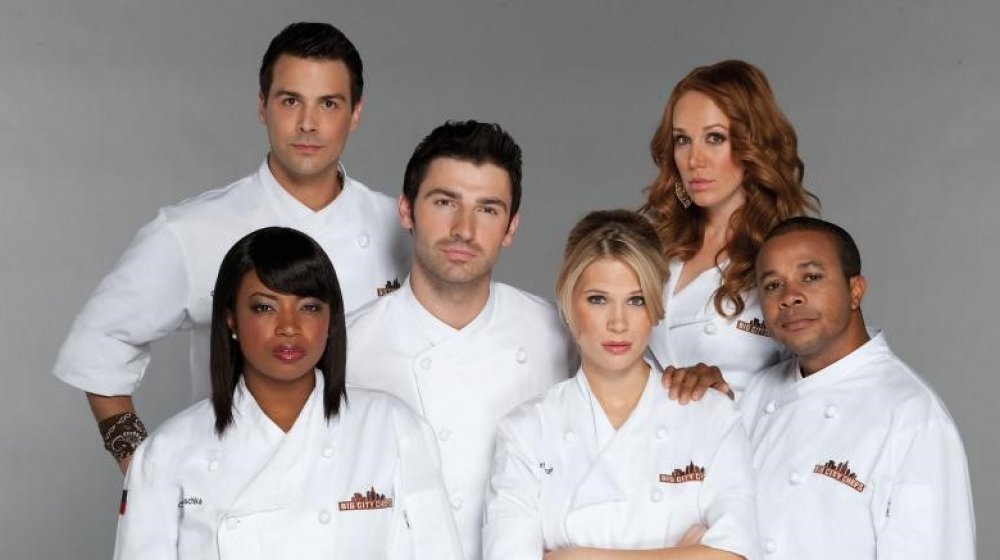Shows Food Network Never Should Have Canceled
Since its launch in 1993, Food Network has been a major force in both the culinary and entertainment worlds. Initially, Food Network had a handful of restaurant chefs who actually taught viewers how to cook. Emeril Lagasse, Sara Moulton, Bobby Flay, and Mario Batali were the first superstars for Food Network. By the early 2000s, however, ratings were slipping, and programming executives at Food Network decided to get rid of its "dump and stir" shows. Competitive-cooking shows, like Iron Chef America and Chopped, became the norm, and the cult of the celebrity chef gave rise to over-sized personalities instead of skilled chefs who could also teach. It makes us wonder whether even Julia Child would have survived at Food Network during that tumultuous time.
Over the years, Food Network has made poor decisions based on its trying to win the ratings battle, and as a result, many of its early and best shows got chopped. Some shows deserved to be axed, but there are other shows that Food Network never should have canceled, like the ones we take a look at here.
Taste
David Rosengarten was one of the first Food Network stars. He wasn't a trained chef, he had a doctorate in dramatic literature, and was an assistant professor of theater before taping a failed PBS pilot (per Honolulu Star). Food Network got a hold of that failed show and hired him as co-host with Donna Hanover (the former Mrs. Rudy Giuiliani) on Food News and Views, one of the first shows that launched Food Network in 1993 (via Los Angeles Times).
The following year, Rosengarten created Taste, and each episode focused on one recipe, which served as a showcase for Rosengarten's impressive skills and wit. While cooking a BLT, he shows burnt strips of bacon, commenting they were "burnt to a crisp, beyond recognition, you can't even check its dental records." Despite his buttoned-down appearance, he isn't a snob, and enjoys a tuna sandwich as much as fois gras.
Taste ran for eight years, and when Food Network decided to ditch its "dump and stir shows," it was canceled in 2001. Since then, Rosengarten has had a substantial career as an award-winning cookbook writer, teacher, journalist, and wine connoisseur. However, as recounted in From Scratch: Inside the Food Network (via The Daily Meal), by the mid-2000s, Food Network had so completely forgotten one of their original stars that a staffer contacted Rosengarten to inquire whether he might audition for The Next Food Network Star.
Cooking Live With Sara Moulton
Sara Moulton told KLCS in an interview that she never wanted to be on television. "I thought that was tacky, only people who needed attention did that."
Moulton graduated from the Culinary Institute of America in 1977 and when working in a restaurant in Boston, a co-worker, who had volunteered for Julia Child's show Julia Child and More Company, recommended Moulton to Child. The two hit it off, and Moulton was hired to test recipes. Moulton's mentorship with Child helped secure her the job as executive chef on Good Morning America, where, again, she worked behind the cameras. In 1993 Food Network hired Moulton to run the network's kitchen, and after she shot an episode of How To Boil Water, they offered her a show. "They were so desperate in the early days of Food Network," she said, "they were all news people, not food people."
Cooking Live premiered in 1997. Moulton usually prepared three recipes that highlighted particular ingredients, as reported by The Washington Post. A fierce multi-tasker, she managed to keep cooking, despite the occasional odd question from a viewer. A lesson she learned from Child: Smile always, and don't forget to make the food look delicious.
After 1,200 episodes, Food Network canceled the show in 2004. Moulton blames the network's switch in demographics. "It had been women of I don't know what age group. But they changed it to 15-35-year-old males," she told Eater with some bitterness. "They were more interested in really good looking people with really big personalities."
Emeril Live
For millions of viewers (via NPR), one of the most entertaining Food Network shows was Emeril Live. In 1993, Food Network got in touch with Lagasse and offered him a show, How To Boil Water. In an interview with New Times, Lagasse admitted the show stunk. But Food Network realized they had a superstar and next came Essence of Emeril, the show that launched Lagasse's famous "Bam!" (via Bon Appetit). The show did better, but Food Network struck gold in 1997 with Emeril Live. Its unusual format of Lagasse cooking several dishes (sometimes all at once) in front of an audience with a live jazz band was an instant hit. As former Food Network president Judy Girard said: "It only takes one show to make a network, initially... and Food Network, fortunately, had Emeril to do that..."
With its eclectic and unique mix of Lagasse's ebullient personality, fabulous food, celebrity drop-ins, and a rocking band, Emeril Live was a sensation. But by 2004, Food Network executives were advised that "dump and stir" shows, like Emeril Live, were losing ratings to the competition cooking shows. Looking back on Emeril Live, it's difficult to imagine how anyone could think the show was dull. A few changes were made to Emeril Live, but executives weren't convinced that Lagasse was still worth the financial investment, and citing changing demographics to a younger audience, Food Network axed the show in 2007. It's ironic that today Lagasse is exactly the type of over-the-top personality that proliferates on current Food Network shows.
East Meets West
The first words that Ming Tsai spoke to a television camera were: "Hey, I'm Ming Tsai, I was born Chinese, I am still Chinese, and today I'm cooking lamb." (via KLCS) Tsai was a chef at a Santa Fe restaurant, and Food Network approached him to appear on Dining Around, a food-travel show. In 1996 there were few chefs who performed well on television, and feeling cocky, he uttered the words that got him a five-part competition-style show. After he filled in for Sara Moulton on Cooking Live, he became known as the resident "Asian expert." Food Network sent him to a two-day media-training seminar, where he learned to "make love to the camera," and in 1998, his show, East Meets West — one of the first "fusion cooking" shows — premiered.
Tsai wanted to emulate his boyhood idols Julia Child and Jeff Smith ("The Frugal Gourmet") and honed his sharp wit to a mellow, laid-back style. At the time, Americans knew little about Chinese cuisine, and so he taught culture and history as he demonstrated recipes. In the show's first year, Tsai won Food Network's first Emmy Award as Outstanding Service-Show Host.
East Meets West had a five-year run, but in 2003, the show was canceled. Tsai moved on to PBS, creating another award-winning show. Tsai confessed to First We Feast that the Food Network had "...morphed into reality television now, which I have nothing against, but I'm at WGBH because I still get to teach."
Party Line With The Hearty Boys
The first season winners of The Next Food Network Star in 2005 were openly gay couple Dan Smith and Steve McDonagh. Smith was the chef, and McDonagh did the food styling. Former actors, they created their Chicago-based catering company, Hearty Boys Catering, Inc. in 1999, focusing primarily on gay weddings. In 2004, as a last-minute decision, they sent in a three-minute audition tape to enter the first The Next Food Network Star contest. As reported by Chicago, Food Network executive Bob Tuschman loved their tape, in which they admitted they were gay. "My first reaction... was they could win this thing. They were funny, and the camera loved them. You just got the feeling that they were being themselves."
The prize was a six-episode show, but Tuschman believed in them and offered an additional 26-week contract. Their show — Party Line With The Hearty Boys — had Smith whipping up three recipes in 17 minutes, while McDonagh offered entertaining tips. Tuschman claims that complaints about an openly gay couple on Food Network had been "...so minor as to be dismissable."
Be that as it may, the show suffered dismal ratings (via Out) and was canceled when Smith and McDonagh's contract expired. As reported by Chicago Business, they used the exposure from the show to build their catering business exponentially. Tuschman later said "we're always looking to broaden the diversity of our hosts," but as evidenced by the few LGBTQ and mostly white hosts on their shows, Food Network must still be looking.
The Chef Jeff Project
For six weeks in 2008, Food Network had a good thing going with The Chef Jeff Project. Per Blue Kitchen, ex-con Jeff Henderson discovered his passion for cooking when he was assigned kitchen duty in prison. Upon his release, he worked his way up to become Chef de Cuisine for the restaurants at Caesar's Palace (per EdTech). The concept of the show reflected his philosophy of giving back: Six young people with troubled backgrounds were given the opportunity to compete for a two-year culinary-school scholarship. But The Chef Jeff Project wasn't really focused on the competition (via New York Daily News). Instead, it showed how the contestants struggled with their own personal demons. In the show, Chef Jeff finds a balance between expecting excellence, and giving the encouragement the teens never got from their families.
The show shot at Chef Jeff's catering company, and over the 28 days of filming, the contestants were competitive but not aggressive, often offering support when someone was having a rough time at home. Food Network did not pick up the show for a second season and did not release any information about why it was canceled. Perhaps it was too expensive, or perhaps Chef Jeff wasn't available.
A Cook's Tour
Anthony Bourdain sent the culinary world spinning in 1999 with his expose of the restaurant business in The New Yorker, which he followed up with his equally shocking memoir, Kitchen Confidential. Food Network grabbed Bourdain when the book was published, and when A Cook's Tour premiered in 2002, the difference between Bourdain's spiky edges and Food Network's cheery stars was apparent. As reported by Eater, A Cook's Tour was the first show that sent a chef to far-flung parts of the world and ate food that most Americans had ever heard of. Viewers may have been fascinated or repulsed by what Bourdain literally ripped teeth into, but he showed a vulnerability and heartfelt appreciation that sharing a meal was an intimate experience (via Salon).
One of the most famous episodes of A Cook's Tour was its third episode, in which Bourdain travels to Vietnam. In a scene straight out of a horror movie, he slurps back the pulsating heart of a freshly killed cobra, which he later said was like "a very athletic, aggressive oyster." For the show's third season, Bourdain wanted to visit Ferran Adria's legendary restaurant El Bulli in Spain. But, as reported by Bon Appetit, Food Network balked at the expense and claimed Bourdain's ratings did better when he stayed closer to home. Bourdain walked out and took a similar version of A Cook's Tour — Parts Unknown — to CNN, where it enjoyed 12 seasons until his untimely death in 2018.
Dinner: Impossible
When Dinner: Impossible premiered in 2007, Robert Irvine was described by Food Network as a cross between James Bond and MacGyver (via CinemaBlend). Episodes took Irvine to a dizzying array of locations — a speeding locomotive, a football field, Colonial Williamsburg — where he would feed a ridiculous number of guests a high-end culinary feast. If you've ever cooked Thanksgiving dinner for 20 or more people, you'll learn a thing or two from watching Dinner: Impossible. The bulked-up and buff Irvine was fierce and focused but never Gordon Ramsay-level abusive to his team. Dinner: Impossible was unlike any show on Food Network: It was exciting, and it was fun.
But then Food Network found out that Irvine fibbed about cooking for three U.S. presidents and baking Charles and Diana's wedding cake, and he was fired (via The New York Times). He was replaced with Michael Symon, who, according to Delish, simply wasn't entertaining enough and seemed to approach every challenge like a chore. Irvine was reinstated. The new episodes seemed as if Food Network was punishing Irvine by dropping him in the middle of a desert island with no equipment and no supplies (via Hawaii).
In the end, Food Network looked foolish over the resume scandal. As noted by SEO-Theory, the Irvine temporary expulsion implied that either Food Network didn't vet their stars, or it may have welcomed the scandal for publicity. Dinner: Impossible lasted eight seasons, and in 2011, Irvine transitioned to Restaurant: Impossible, which was another hit but less unique.
The Ace of Cakes
By his own admission, Duff Goldman was always more of an entertainer than a star baker. His first show, F*ck You, Let's Bake, was live on stage in a Baltimore theatre and had Goldman battling off ninjas while he cooked. As he told Delish, "It was very much in the vein of Monty-Python-meets-Adam-Sandler." Goldman's brother, a television producer, sent a demo reel to Food Network, and the iconic Ace of Cakes premiered in 2006. Goldman was also a musician, and he felt that Ace of Cakes and his Charm City Bakery were just sidelines to his band. "We weren't trying to be good on television; we were trying to be good in bands."
Over the next five years, Goldman and Charm City rocketed to success and became household names, thanks to his insanely artistic cakes, like dinosaurs, a full-size motorcycle, and even, Betty White (via Shared.com). In 2013, Charm City Bakery was asked to bake President Obama's inauguration cake, which in 2017 was then reproduced exactly — but not by Goldman — for President Trump's inauguration, which Goldman posted on Twitter.
Ace of Cakes launched a gaggle of copycat shows, about which Goldman told Eater "the genre of cake television was cheapened by TLC and other channels that chased the success of Ace of Cakes." In 2010, Goldman decided to move to Los Angeles, and after 116 episodes, Food Network canceled Ace of Cakes in 2011. Two other Food Network shows were developed for Goldman, but neither caught on.
The Private Chefs of Beverly Hills
As described by Food Network, The Private Chefs of Beverly Hills "peeks into the high-demand world of culinary glamour." This "delicious docu-soap" was about six private chefs who work for Big City Chefs as they jostle with each other and their outlandish clientele. Although the 2009 show wasn't favorably reviewed (via Phoenix New Times), it was actually quite entertaining as a hybrid of a cooking show and a "reality" show. Some of the fabricated flare-ups between the chefs were awkward and clearly scripted — the chefs were handsome and pretty to a fault but certainly not actors — their interactions with the entitled hosts and hostesses were fun to watch (per Eater).
But Food Network stepped into a steaming plate the following year when it was sued for stealing the concept for the show. As reported by The Hollywood Reporter, the plaintiff, Private Chefs, Inc., claimed to have pitched the show — titled Celebrity Dish — in 2002 to Food Network's president, who purportedly declined. The complaint accused Food Network of "Stealing the show for, concepts behind, and the contents of the show." The plaintiff's attorney filed an injunction to prevent the show's second season from airing, but it was denied by the court (via Reuters). The lawsuit was quickly settled, and the terms of the settlement were never revealed. Food Network aired the 22 episodes that were shot, but the show was quietly canceled after its last episode aired in late November 2010.
